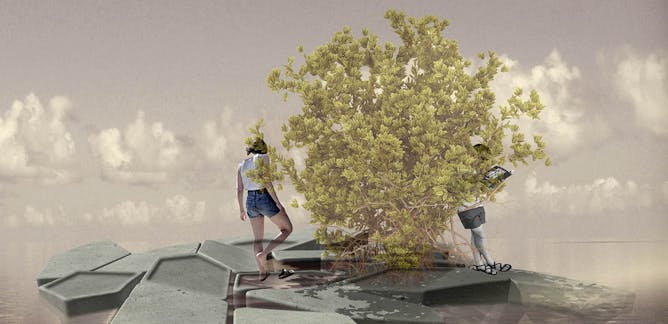
Articles on Unesco 2024 (English)
Displaying 1 - 20 of 25 articles

Mangrove forests are shrinking due to human activities, yet they’re essential for shoreline protection and carbon sequestration. Ongoing research explores the concept of “floating” mangrove forests.

Traditionally dominated by the use of centralised, resource-intensive servers, machine learning is being democratised with the growth of “TinyML”, distinguished by its small size and low cost.

When Elon Musk took control of Twitter, many were concerned about the reappearance of extremist accounts. In retrospect, X has shown itself to be selective.

In the Mediterranean, heat waves are decimating underwater forests that are essential to ecosystems. The gorgonians seem to be better able to resist in the depths, but this refuge may only be temporary.

Once the capital of the Mughal empire, Old Delhi is now under threat. Geo-information technology can reveal its previous form, function, and context, however, and so help preserve and bring it back to life.

The Covid-19 pandemic will long be remembered for the lockdowns it imposed and the millions of lives it stole. A recent Unesco report reveals that it has also took a large toll on world heritage sites.

The Covid-19 pandemic has the potential to make tourism more sustainable in Africa, improving the lives of local communities rather than just catering to international visitors.

Designed to act as a call for ideas and projects by all of Genoa’s stakeholders, Rolli Lab seeks to enhance the World Heritage site’s impact on city’s cultural, social and economic activity.

On the border between India and Bangladesh, the Sundarbans suffer from overexploitation and rising sea levels. With a “Climate Wall” project, a virtual museum is raising awareness and increasing resiliency.

To boost their attractiveness to tourists and residents alike, in 2020 the towns of Gongju and Buyeo – once Imperial capitals – launched the “Smart Town Challenge” to link online and offline services.

Mayotte is no exception to the adage “small islands, big problems”. A newly born volcano combined with poor land management and accelerating climate change has put its fabled lagoon at risk.

Often thought of as eternal, mountains are vulnerable to climate change and tourism. To protect them, they should be recognised for their cultural values, not just their natural characteristics.

Rising temperatures and extreme weather pose an existential threat to many UNESCO World Heritage sites, but widespread discussion is needed for meaningful change.

World heritage sites play an essential role in advancing Unesco’s goals, but more foresight is needed to imagine and enable promising strategies that address the needs of future generations.

With accelerating climate change making the need to decarbonise clearer by the day, two oil-dependent countries weigh how to preserve and present their historical fossil fuel infrastructure.

Urban farming is an ancient tradition in Bamberg, and the gardeners’ district is an integral part of the World Heritage City, growing food, promoting sustainability and fighting climate change.

Three nature reserves in Belarus, Poland and France are united by desire to preserve the environment common to all mankind.

Ecosystems thrive in places where human connections with nature go back generations.

Young academies, which generally represent early career scientists, fared far better than their senior counterparts - a promising sign for the future.

The world needs to protect 30% of the ocean by 2030. We won’t achieve this goal without using new technology to patrol and preserve marine protected areas.
